Zero waste shopping is one way to greatly minimize your negative impact on the planet, and there are so many options to get started! Here at the Co-op, we’re researching the best zero waste shopping strategies and recipes so we can share them with you here. Check back on this page as we add more products and resources!
Why go Zero Waste?
Currently, our resource production system goes one way – from the earth into a landfill. Natural resources, like trees, metals and petroleum are extracted and sent to manufacturing factories. Factories transform the resources into consumable goods, but in the process, often create pollution or toxic waste. This is all for products that are meant to end up in a landfill, an incinerator or an ocean. The products are then distributed, often traveling halfway around the world to get to you, the consumer. The product is used and then discarded.
The United States is #1 in trash production. As Americans, we make up around 4.27% of the global population, yet we consume about 24% of the world’s energy and produce roughly 40% of the world’s waste. Recycling only accounts for 30% of our trash, when really, the EPA estimates that 75% of our waste is recyclable.
Single-use plastics are getting a lot of attention in the media right now. That’s because single-use plastics are the leading cause of plastic pollution. So, things like water bottles, straws, plastic bags, and food packaging – these are all single-use plastics. Items that are meant to be used once, before tossing in the bin. Roughly 8-10 million tons of single-use plastics are dumped into the ocean each year. It’s estimated that 10 rivers in the world contribute 90% of that plastic waste to the ocean. It’s the equivalent of dumping 1 billion elephants into the ocean each year!
Part of the issue with this is that instead of decomposing, plastics break down into smaller and smaller pieces, called microplastics. These micro-plastics can cause damage to the reproductive system and liver of marine animals. There haven’t been many studies done on how microplastics can affect human health, but it’s definitely something to think about. Until plastics are made in a more sustainable and responsible manner, it’s best to avoid their usage as much as possible.
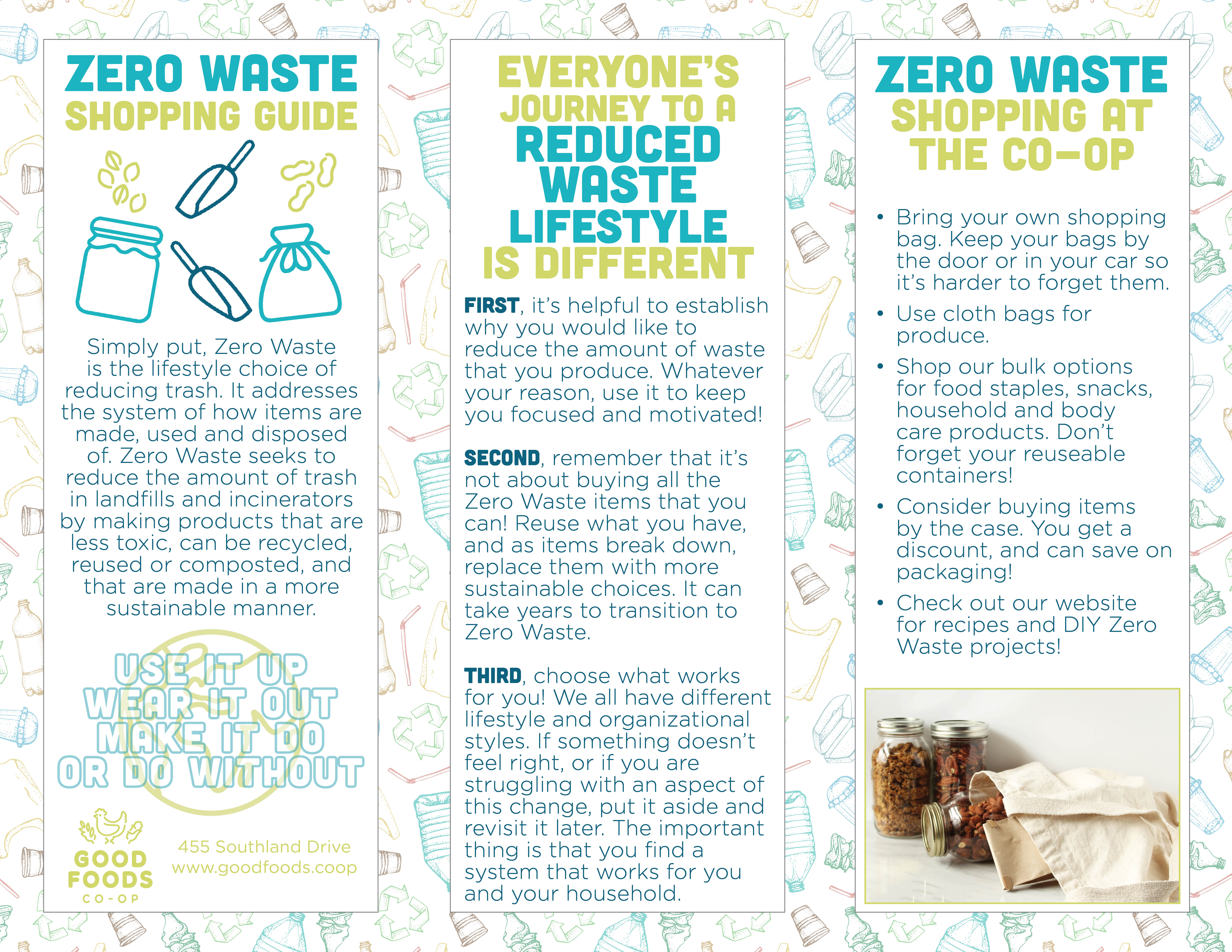
Download our Zero Waste shopping brochure to save on your phone or computer for easy reference!
Versión español aquí.
Switch Up to a Circular Economy
So, instead of the linear structure of extract, make, use, discard, we can support a system where all resources can be integrated back into our resource cycle. First, we can reduce the amount of trash being sent to landfills and incinerators by purchasing products that can be recycled, composted, and that are also made in a more sustainable manner. Instead of throwing something out, think of ways that the item can be re-used, up-cycled, or repaired.
You might have heard of the 3-97 ratio, which puts forth that municipal waste is 3% of the waste produced, while industrial waste is 97%. While this statistic is a little outdated, it shows an estimate of how much waste global manufacturers produce versus the individual. This is why it is so important to vote with your dollar; to show industries that we want products that are manufactured in a more responsible way.
Due to economic circumstances, many of us are not always able to make the most ethical choice available. This is okay! If you can’t make the best choice, maybe you can, at least, make a better choice. For example, if you’re not sure about cloth toilet wipes, you could use bamboo toilet paper. Little choices and actions can have a huge impact!
A change to a Zero Waste lifestyle can be much more manageable if you start small. Small changes are easier to make, and allow you to change your mentality about reducing waste, while also finding what works for you and your family. Bring your own reusable water bottle, instead of buying plastic water bottles. Stop using plastic straws, and carry some stainless steel or bamboo straws with you. Pack your lunch. Bring your own reusable shopping bags, and, of course, shop in bulk!
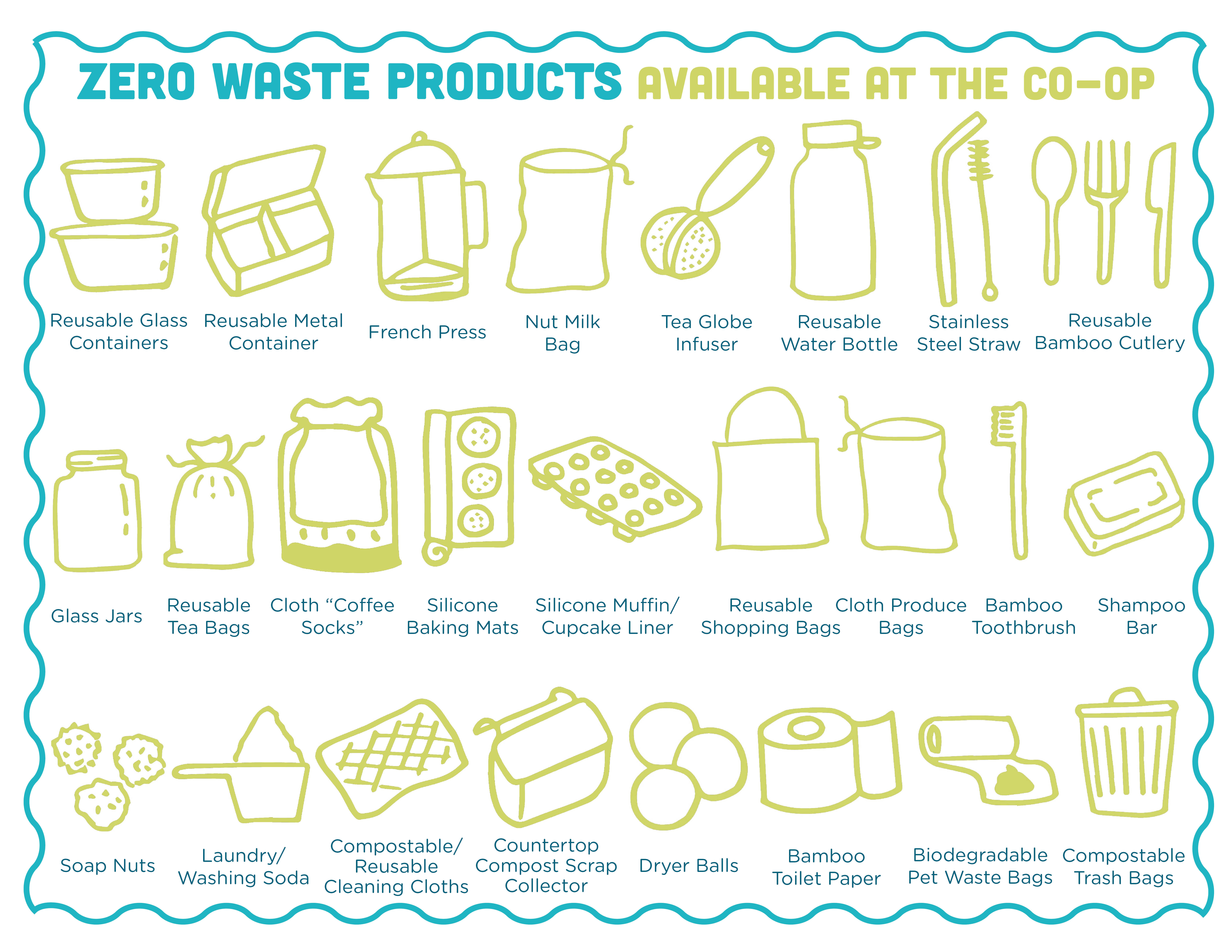
Download our Zero Waste shopping brochure to save on your phone or computer for easy reference!
Versión español aquí.
Cleaning Supplies
Since many cleaning supplies contain water as the first or one of the main ingredients, an easy switch to powdered or DIY formulas where you add your own water is an easy zero waste switch. When you go DIY or buy your detergents in bulk using your own packaging, your efforts go even further for Mother Nature.
If you haven’t looked into DIY cleaning solutions, you’d be surprised how far you can get with simple ingredients like vinegar, baking soda, Castile soap and washing soda (though, not at the same time, mind you). Never heard of washing soda? It’s literally just baking soda that’s been spread out in a thin layer on a baking sheet and baked at 400°F for an hour. You can easily make it, or you can purchase it. This website has great info about the different uses for baking soda and washing soda, and why you don’t want to mix up the two. Try these two DIY recipes if you’re ready to experiment:
Dish Soap
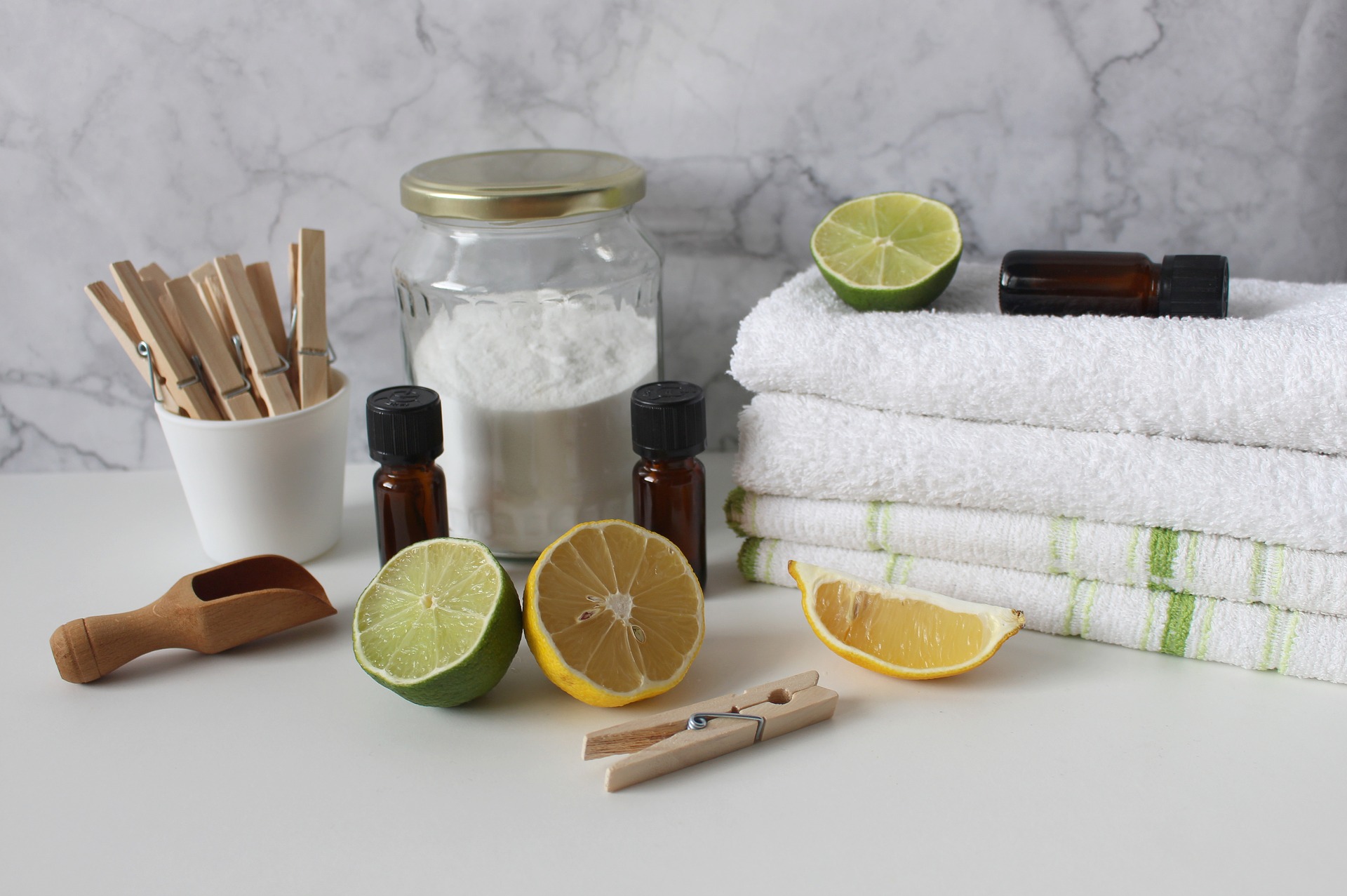
3 C. water
3 T. castile soap, grated (you can find it by the bar in our Wellness Department)
¼ t. Washing Soda
2-4 drops essential oil, optional
Mix soap and water, warm using a pot over low heat or by heating for 30-second increments in the microwave until the soap has melted. Add in the washing soda. Let sit 8 hours, or overnight. The washing soda in this recipe helps to thicken the dish soap, if you would like a thicker consistency, use ½ t. of washing soda.
Laundry Detergent
Author: Megean Welden for Zero Waste Nerd
1 C. washing Soda
1 C. baking Soda
1 bar Castile Soap, grated (1 C. packed)
Grate the bar of soap. In the food processor, mix all ingredients. Pulse a few times, until the soap is very fine. Use 2-3 T. per load of laundry. Warning: Do this in a well-ventilated space, as this makes a fine powder!
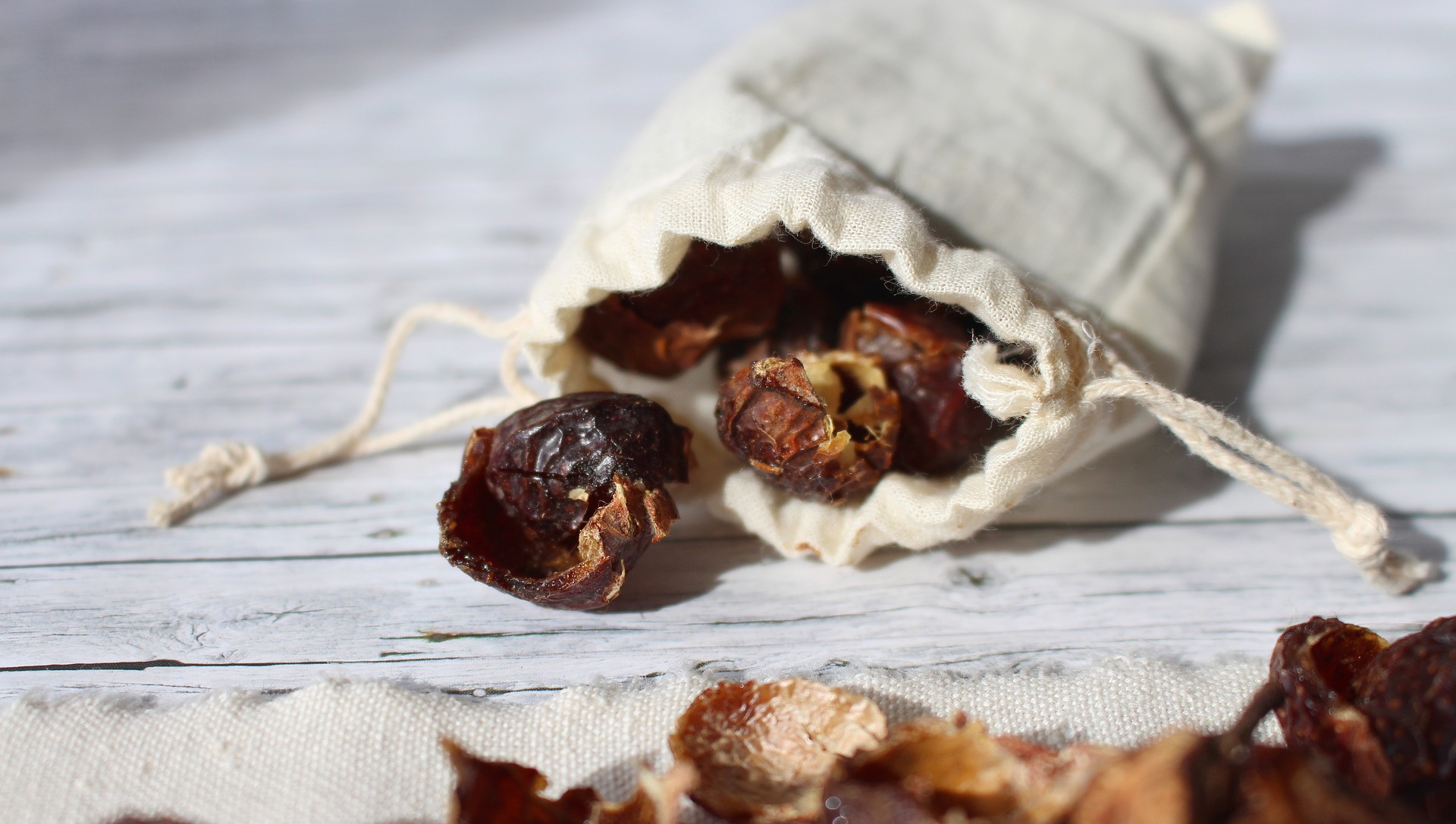
Not into the DIY or just want to experiment with some options first? Check your Co-op for bulk cleaning supplies and eco-friendly detergents and cleaners from the Nellie’s brand. Their laundry soda, for example, comes in a tin that you can then bring back and refill over and over again from our bulk cleaning supplies area without the need for any more packaging. The same goes for our bulk beauty supplies (like rose water) and soap (like Dr. Bronner’s liquid Castile soap) – just bring in your empty container and fill it up!
Soap nuts are another versatile and zero waste shopping option that can be used for laundry and creating DIY cleaning concoctions. They are all-natural and reusable and despite the name, they’re actually not a nut, they are the fruit of the soapberry tree (who knew?!). Never heard of them? Check out how they work.
Beauty & Personal Care
There are countless concoctions you can make for beauty products with a few ingredients. It cuts down on packaging when you make it yourself, plus you know every ingredient going into it, allowing you to fine tune the exact formula that works best for your skin. With a selection of bulk soaps, lotions and beauty needs in our Wellness Department, so you can truly go zero (or very minimal) waste after buying your initial containers. Try experimenting with these simple recipes to get you started:
Moisturizing Hair Mist
1 T. moisturizing oil of your choice
4 T. hydrosol
2-3 drops essential oil, optional
Mix all ingredients into a spray bottle. Apply 2-3 sprays after showering.
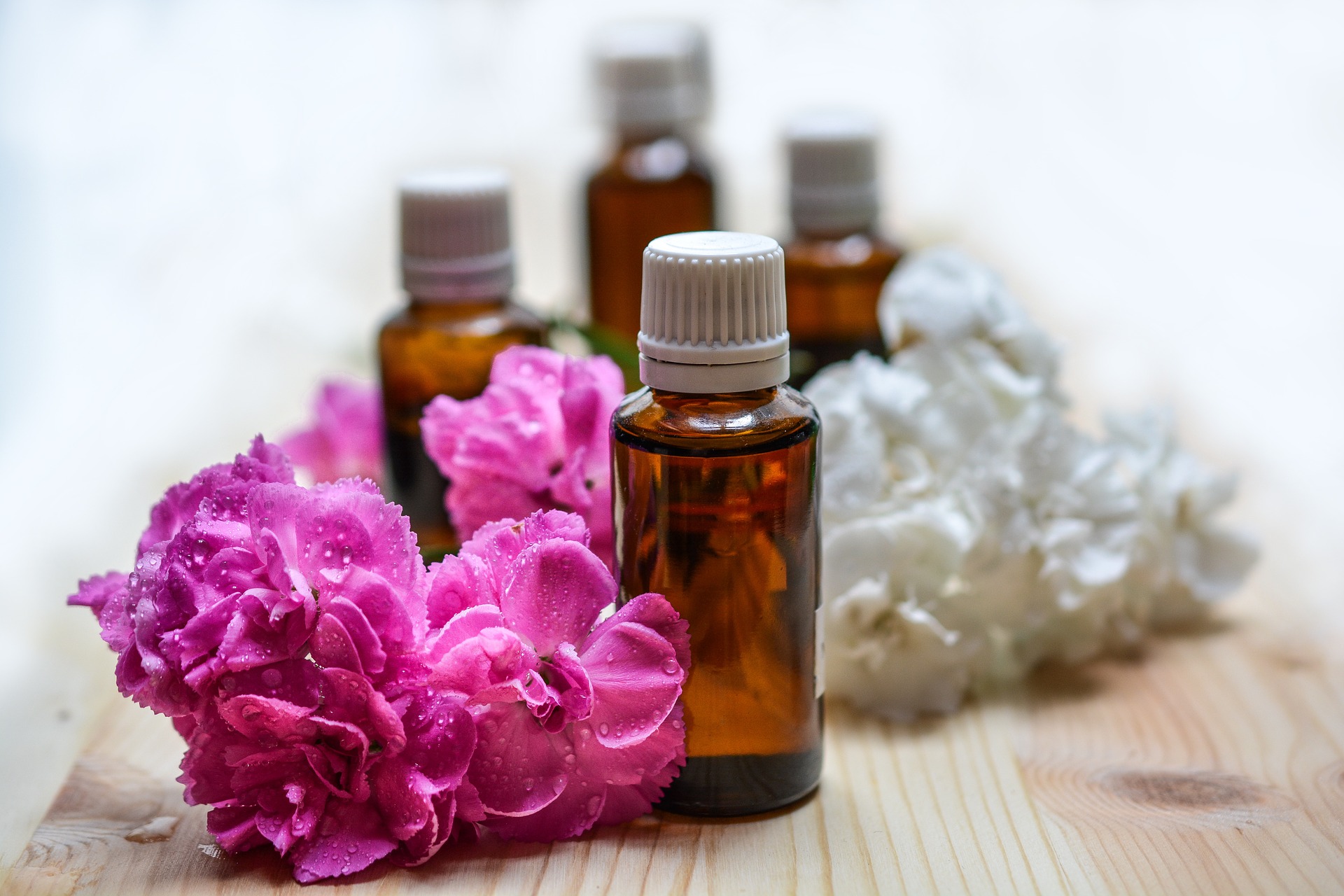
Hair Rinse
1 T. apple cider vinegar
½ C. water
Mix and pour slowly over hair. Let sit a minute or two, then rinse. For longer hair, double or triple the amounts.
Facial Cleanser
1 T. oil (almond, rosehip seed, or jojoba is best)
3 T. witch hazel
2-3 drops essential oil, optional
Mix ingredients in a bottle. Use a cleansing pad to apply, then rinse. For a truly no-waste option, spray directly onto face.
Food Storage & Buying in Bulk

The folks who have been shopping the Co-op for decades can tell you the benefits of shopping for bulk foods when it comes to cost savings, but the reduction in packaging also makes it zero-waste-shopping-approved. Bring a container from home, get it weighed at our Hospitality Desk or use one of the scales in the bulk aisle to get your “tare weight” (the weight of your container), then fill up using scoops in the bulk bins. Write the PLU number listed on the bin on your container so the cashier is able to ring you up for the correct item. That’s it!
So what do you do with your foods once they’re cooked and you need to store them? Obviously, the zero waste answer is to use reusable food storage containers (we have a variety of options at the Co-op). Replace plastic sandwich and snack bags with resealable silicone bags, which can be hand washed and used over and over again. Replace plastic wrap or foil with stretchable silicone lids that fit well over plates, pans and bowls. Need something to line your cookie sheets for non-stick baking? Try silicone baking mats (available with our kitchenwares in Aisle 2).
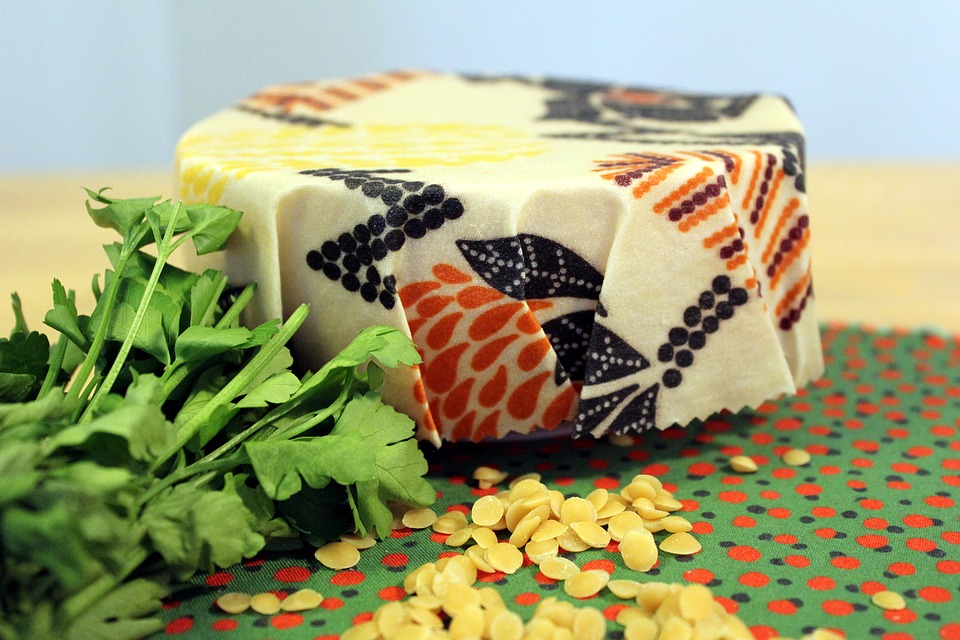
There’s also a DIY, plastic and silicone-free food storage solution – wax food wraps. They’re a great way to repurpose fabrics/clothing and they can be “rewaxed” over and over again after they lose some of their sticking power. This blogger tried many recipe variations before finding the right formula for her food wraps. One uses beeswax (we have solid bars of it available in our Wellness Department, along with the necessary jojoba oil), and there’s also a vegan version using carnauba wax.
Share Your Ideas With Us!
Do you have a favorite zero waste practice? Share it with us by emailing goodfoods@goodfoods.coop.
